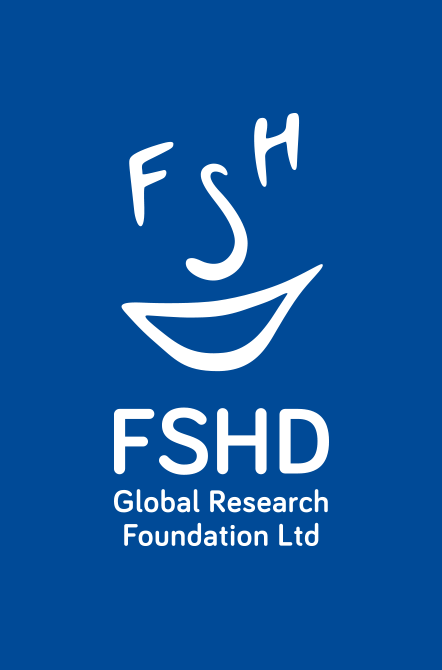GRANT 22
Research Institution: Leiden University Medical Center
Principle Investigator: Professor Silvère M. van der Maarel, Ph.D.
Type: Collaboration
Project title: “Increasing SMCHD1 Levels as a Therapy for FSHD1 & FSHD2”
Status: Completed
Summary
The main aims of this project was to (a) determine the minimal SMCHD1 gene activity necessary to block the DUX4 toxic protein responsible for muscle wasting in FSHD, (b) to identify factors that regulate SMHD1 protein levels and activity, and (c) to identify ways to control SMCHD1 gene activity in order to treat FSHD.
The SMCHD1 gene on chromosome 18 encodes a protein that binds to the D4Z4 repeat on chromosome 4 to keep DUX4 repressed in muscle cells. FSHD is molecularly characterized by partial derepression of DUX4 in muscle and the presence of DUX4 in muscle is toxic to this tissue. Derepression in FSHD1 is the consequence of shortening of the D4Z4 repeat array, while in FSHD2 it is most often caused by mutations in SMCHD1. In this project we established that 50% reduction in SMCHD1 levels in muscle cells is sufficient to derepress DUX4. Conversely, a small increase in SMCHD1 levels is sufficient to repress DUX4 in FSHD1 and FSHD2 muscle cells. We have thereby provided proof-of-principle that accomplishing moderate increases in SMCHD1 levels is a plausible therapy for the majority of FSHD individuals. Our efforts are therefore directed at understanding the regulation of SMCHD1 and identifying means to increase SMCHD1 levels or activity in muscles of individuals with FSHD. To this end we have established methods and that will allow us to screen for molecules that increase SMCHD1 in muscle.
PROGRESS REPORTS
January 2013
An international consortium of clinical and basic scientists from Europe, Australia and the United States aims to investigate the role of the FSHD2 gene, SMCHD1, in causing facioscapulohumeral muscular dystrophy (FSHD).
FSHD occurs in two forms. FSHD2 represents about 10% of cases, and was previously unexplained by the genetic tests for FSHD1, which represents the majority (90%) of FSHD affected people. SMCHD1 is a protein that binds to the D4Z4 region of DNA, in muscles, to prevent expression of DUX4, a protein which when present in muscle is implicated in causing FSHD. In FSHD2 patients, mutations in the SMCHD1 gene lower the SMCHD1 protein’s binding to the D4Z4 region of DNA, leading to DUX4 protein expression in muscles. However, SMCHD1 has been also implicated in people affected by FSHD1, the majority of FSHD cases, in which DUX4 protein expression is thought to increase by a shortening of the D4Z4 DNA. As alluded to above, DUX4 is normally not expressed in muscle cells, as it is toxic for these cells.
The long-term goal of this project is to understand how SMCHD1 protein regulates DUX4 protein suppression and to identify ways to modulate SMCHD1 activity as therapy for some forms of FSHD.
Update September 2014
The central premise of this project is to (a) determine the minimal SMCHD1 gene activity necessary to keep the DUX4 toxic protein responsible for muscle wasting repressed in muscle, (b) to identify critical factors that regulate SMHD1 protein levels and activity, and (c) to identify ways to control SMCHD1 gene activity in order to treat FSHD.
Firstly, to determine the minimal SMCHD1 activity to prevent the DUX4 toxic protein expression in muscle, symptoms were recorded for 25 individuals with one gene copy of SMCHD1, and D4Z4 methylation analysis of more than 80 individuals has been completed. SMCHD1 gene silencing studies are currently ongoing.
Secondly, for identification of natural variants of SMCHD1 with different activity, several studies have been initiated. The group using of large gene and protein databases to identify SMCHD1 variants and correlate them with protein levels. In parallel, they are identifying individuals with unusual high levels of D4Z4 DNA methylation, which can control expression of genes. Their objective in this study is to identify gene variants that have D4Z4 methylation. They have developed new laboratory assays that allow for high throughput DNA methylation screening in larger numbers of people.
Thirdly, to identify other genes that modify the SMCHD1 gene expression and possibly increase SMCHD1 activity, cell lines have been created that indicate SMCHD1 gene activity. Their experimental work is currently ongoing. Their focus is on generating a panel of cell lines for optimal high throughput screens.
Update November 2014
The main aims of this project are to (a) determine the minimal SMCHD1 gene activity necessary to block the DUX4 toxic protein responsible for muscle wasting in FSHD, (b) to identify factors that regulate SMHD1 protein levels and activity, and (c) to identify ways to control SMCHD1 gene activity in order to treat FSHD.
Significant progress has been made in several areas using resources from all of the participating institutes. D4Z4 DNA methylation, which is a measure of DUX4 activity, has been correlated with certain SMCHD1 gene mutations leading to different levels of activity. Current studies are ongoing to determine the minimal level of SMCHD1 necessary to suppress the toxic DUX4 protein.
New laboratory tests have been developed to identify individuals with unusual levels of SMCHD1 activity, by testing of large populations. Testing such individuals will facilitate the identification of factors that influence SMCHD1 activity. This work will be complemented with laboratory screening of compounds that may affect SMCHD1 activity, for which the experimental work is also currently ongoing.
Update August 2015
The main aims of this project are to (a) determine the minimal SMCHD1 gene activity necessary to block the DUX4 toxic protein responsible for muscle wasting in FSHD, (b) to identify factors that regulate SMHD1 protein levels and activity, and (c) to identify ways to control SMCHD1 gene activity in order to treat FSHD.
Year 2
Results (a): DNA methylation (epigenetic) analysis of individuals with chromosome 18 abnormalities, where SMCHD1 is located, are being studied for D4Z4 (FSHD associated chromosome region) methylation, both in white blood cells, as well as in newly established skin cell (fibroblast) lines form these individuals. Since fibroblasts can be differentiated in to muscle cells, this will also allow study of the effect of chromosome 18 abnormalities on D4Z4 in a muscle context. SMCHD1 under- and overexpression studies in muscle cells with different D4Z4 copy numbers are underway to establish the effect of SMCHD1 activity on DUX4 repression with different repeat numbers. Results (b): DNA methylation analysis in FSHD1 and FSHD2 families indicated natural genetic variants with different susceptibility to DUX4 protein, in families carrying 7-10 D4Z4 repeats. They showed deletion of the SMCHD1 gene and 4 neighboring genes can cause FSHD and identified new mutations in FSHD2 families. Results (c): Identifying ways to control SMCHD1 activity. They have now developed cell lines for high throughput FSHD drug screening assays.
Final Update March 2016
The SMCHD1 gene on chromosome 18 encodes a protein that binds to the D4Z4 repeat on chromosome 4 to keep DUX4 repressed in muscle cells. FSHD is molecularly characterized by partial derepression of DUX4 in muscle and the presence of DUX4 in muscle is toxic to this tissue. Derepression in FSHD1 is the consequence of shortening of the D4Z4 repeat array, while in FSHD2 it is most often caused by mutations in SMCHD1. In this project we established that 50% reduction in SMCHD1 levels in muscle cells is sufficient to derepress DUX4. Conversely, a small increase in SMCHD1 levels is sufficient to repress DUX4 in FSHD1 and FSHD2 muscle cells. We have thereby provided proof-of-principle that accomplishing moderate increases in SMCHD1 levels is a plausible therapy for the majority of FSHD individuals. Our efforts are therefore directed at understanding the regulation of SMCHD1 and identifying means to increase SMCHD1 levels or activity in muscles of individuals with FSHD. To this end we have established methods and that will allow us to screen for molecules that increase SMCHD1 in muscle.




